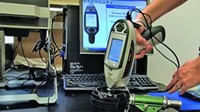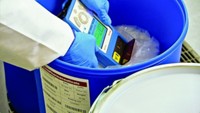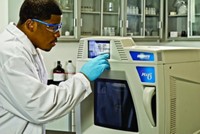Advertisement
Grab your lab coat. Let's get started
Welcome!
Welcome!
Create an account below to get 6 C&EN articles per month, receive newsletters and more - all free.
It seems this is your first time logging in online. Please enter the following information to continue.
As an ACS member you automatically get access to this site. All we need is few more details to create your reading experience.
Not you? Sign in with a different account.
Not you? Sign in with a different account.
ERROR 1
ERROR 1
ERROR 2
ERROR 2
ERROR 2
ERROR 2
ERROR 2
Password and Confirm password must match.
If you have an ACS member number, please enter it here so we can link this account to your membership. (optional)
ERROR 2
ACS values your privacy. By submitting your information, you are gaining access to C&EN and subscribing to our weekly newsletter. We use the information you provide to make your reading experience better, and we will never sell your data to third party members.
Business
Remote Testing: Minilabs Offer An Affordable Chemistry-Based Approach
by Ann M. Thayer
August 13, 2012
| A version of this story appeared in
Volume 90, Issue 33
COVER STORY
Remote Testing: Minilabs Offer An Affordable Chemistry-Based Approach
Portable and handheld analytical devices for counterfeit drug detection can cost anywhere from $10,000 to $50,000. To make testing accessible in developing countries where counterfeiting is widespread, the Global Pharma Health Fund has provided the wet-chemistry-based GPHF-Minilab since 1998. GPHF has been funded exclusively by Germany’s Merck for the past five years. International organizations participate in programs to use and distribute the Minilabs.
Housed in two suitcases, the $4,700 Minilab contains lab ware and reagents to run about 1,000 thin-layer chromatography (TLC) tests and at least 3,000 dye tests. Drug identity and quality can be verified, and counterfeits detected, through the kit’s simple physical and chemical tests, along with available reference standards for comparison. Methods include visual inspection of dosage forms and packaging, disintegration testing to confirm formulations, color reactions to identify a drug’s presence, and TLC to check drug content and potency.
The self-contained lab doesn’t require special storage and can work outdoors in tropical climates. Reference standards have a shelf life of about two years, and reagents can last for at least five. Manuals provided in different languages “read more like a cooking recipe than an instruction booklet,” GPHF states, and are “written in a nonscientific format and rich in illustrations.” Training is also available.
The $3,200 TLC portion works for 58 drug compounds, and the $1,500 dye test part covers 32. The compounds were selected “on the basis of prevailing prescription practices, public health interest, and existing counterfeit case reports,” according to GPHF. Its list includes antimicrobials, anthelmintics, antiretrovirals, antimalarials, and antituberculosis drugs.





Join the conversation
Contact the reporter
Submit a Letter to the Editor for publication
Engage with us on Twitter